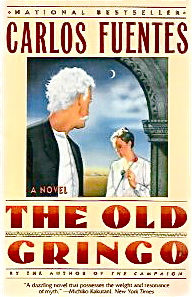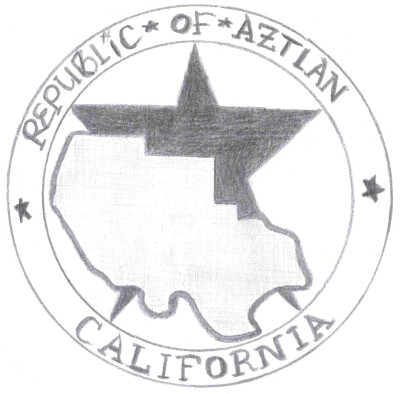
Book Review: The Old Gringo
The Old Gringo
by Carlos Fuentes
1985

Fuentes has written a couple dozen novels and many consider him one of Mexico’s literary icons. I previously picked up one of his novels that I never got to finish so when I stumbled upon this novel I was determined to complete it and learn more about how Fuentes sees the social reality of Mexico.
This novel is set during the Mexican Revolution, depicting the mystery of a real life dissapegrande in 1914. Protagonist “The Old Gringo” is an Amerikkkan journalist who travels to Mexico “to die”.
Fuentes is a skillful storyteller who nudges you through the story with comedy and nuance. At the end of chapter 2, Fuentes quotes “The Old Gringo” as saying: “To be a gringo in Mexico . . . Ah, that is euthanasia”.
Ahh if only . . . It’s known through historical records that during the time of the Mexican Revolution, at least with Pancho Villas line, being a gringo in Mexico actually was euthanasia. Villa at one point gave ‘gringos’ 24 hours to leave Mexico or get the wall. The white oppressor nation was 86’d, but today, sadly Amerikkkans are welcomed by the Mexican bourgeoisie and petty-bourgeoisie who partially are dependent on dollars from El Norte. Mexico’s economy overall depends largely on U.$. dollars.
The Mexican Revolution was essentially a revolution against capitalism internally and U.$. imperialism externally, which in the form of “foreign investors” was exploiting Mexican resources while the people starved. On page 29 Fuentes writes on this and the remedy:
“. . . flee from the Spanish, flee from the Indians, flee from the servile labor of the encomienda, accept the great cattle ranches as the lesser evil, preserve like precious islands the few communal lands, the rights to land and water guaranteed in Nueva Vizcaya by the Spanish Crown, avoid forced labour and, for a few, seek to preserve the communal property granted by the King, resist being rustlers or slaves or rebels or displaced Indians, but, finally, even they, the strongest, the most honorable, the most humble and at the same time the most proud, conquered by a destiny of defeat, slaves and rustlers, never free men, except by being rebels”.
Here Fuentes skillfully walks us through the dilemma of landless people who even out of the most humble circumstances are left with one choice to be free: rebellion. Fuentes also hits on a struggle close to the Chicano nation, which is the land grant struggle enshrined in the Treaty of Guadalupe Hidalgo. Mexican@s, like Chican@s were given land grants that were to honor contracts and titles for communal lands that families and villages held since the arrival of the Spaniards. Much of these lands had been held in common “communally” for even hundreds of years BEFORE Spanish colonization. During the time of the Mexican revolution the capitalists on both sides of the false U.$. border began to disregard land titles and confiscate communal lands by force. Fuentes rightfully highlights that rebellion is the remedy.
It was refreshing to see Fuentes mention the encomienda system, something rare in novels these days. The encomienda system was a debt peonage system in Mexico where, although Mexico is commonly touted as ending slavery before AmeriKKKa, it continued with this plantation-like labor servitude before during and after the Mexican Revolution of 1910.
A good chunk of the book is spent on bourgeois ideas of ‘The Old Gringo’ and the White Teacher, Harriet Winslow who is actually his daughter. Lots of descriptive wordage is spent in an attempt to captivate the reader in an agonizing trip that results in a yawner. But every now and then Fuentes shakes us out of our literary coma with a sharp and vibrant realness that pulls us back into captivating fiction, as on page 64 when he quotes Villa’s General Arroyo:
“Ask yourself how many like me have taken up arms to support the revolution,, and I am talking about professional people, writers, teachers, small manufacturers. We can govern ourselves, I assure you, Senorita. We are tired of a world ruled by caciques, the Church, and the strutting aristocrats we’ve always had here. You don’t think we are capable, then? Or do you fear the violence that has to precede freedom?”
Fuentes captures the reality of freedom. It is a process that can only be birthed through the canal of violence. Capitalism leaves no other option. The reformists will have us attempt to vote freedom into reality, which has never been realized. Even many so-called “revolutionaries” have not developed the correct line on liberating a nation, the truth is that the oppressor will never relinquish their power willingly. Although conditions today are not ripe for armed struggle and we do not promote that stage of resistance today, the truth is as Mao put it: political power grows out of the barrel of a gun.
‘The Old Gringo’ travels to Mexico to join the revolution. A journalist and veteran of the U.$. civil war, he goes to die in Mexico. Perhaps tired and demoralized from an AmeriKKKan life. Yet, he ends up being the conscious voice of the white nation, especially when Harriet Winslow defends the “forefathers” in an evening debate with The Old Gringo. He hands it to her by replying “We are caught in the business of forever killing people whose skin is of a different color”. And forever killing non-whites has indeed been AmeriKKKa’s business since its inception. Fuentes delivers the stark reality of the white nation. Our ancestors in their graves confirm this and would applaud Fuentes for translating this even in novel form.
I have read many novels but none that analyzed William Randolph Hearst, the media magnate/U.$. propagandist. In this novel ‘The Old Gringo’ is a journalist working for Hearst before leaving to ‘die in Mexico’.
Hearst was known for war-mongering and saber rattling through his bourgeois rags in the interest of the U.$. empire. When the Mexican Revolution popped off Hearst had front page headlines urging AmeriKKKa to act, prodding the U.S. government to intervene formally.

Fuentes goes past merely mentioning this and even provides a succinct but excellent political analysis of this in the most simplistic way where on page 81 he describes The Old Gringo participating in the propaganda campaign aimed at Mexico during the revolution:
“This land . . . He had never seen it before; he had attacked it by orders of his boss Hearst, who had enormous investments in ranches and other property and feared the revolution; but as he couldn’t say ‘Go protect my property’ he had to say ‘Go protect our lives, there are North American citizens in danger, intervene!’”
In a nutshell Fuentes deciphers U.$. imperialism. Protecting property abroad for U.$. interests, well put Fuentes. Many of the wars in the modern day stem from this protection of U.$. interests. This war was brought to the surface some years back when U.$. Vice President Chaney , who had been part owner of Halliburton, was outed when the public learned Halliburton profited from the very war that Dick Cheney endorsed. Capitalism profits from death.
‘The Old Gringo’ ends with General Arroyo shooting and killing ‘The Old Gringo’ after The Old Gringo begins the papers (land grant deeds) identifying that the communal lands belonged to the people. The papers destroyed, the land is no longer the peoples’. One can say that ‘The Old Gringo’ in the story represents AmeriKKKA, that old land thief AmeriKKKa who one day will face justice.
I have long been a fan of novels, particularly those revolutionary gems that capture a world not yet here. Culture, which books and art fall into, is powerful and a huge tool for our battle in the realm of ideas. Proletarian literature is crucial to our movement globally and particularly the Chicano Movement (CM). The CM hasn’t churned out a lot of revolutionary novels based in dialectical materialism that depict our social and economic reality. Fuentes could have dug deeper, perhaps inserted characters from political trends or parties of the time in order to analyze these political lines, or highlight the fallacies in them. Nonetheless, despite the shortcoming in the book, it did highlight some key points and does so in an inviting way and is worth a read.
Related Articles:








